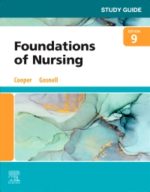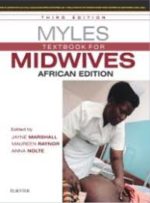This manual covers the full range of communicable diseases in the African region: skin infections, malaria and other vector-borne diseases, infections transmitted via contaminated food and water, tuberculosis and leprosy, diseases transmitted through animals, haemorrhagic fevers and severe acute respiratory illnesses. In this new edition HIV/AIDS has been covered as a chapter on its own. The authors have also included a new chapter titled Emerging and Re-emerging infections in which diseases such as Rift valley fever, Avian flu and Ebola have been discussed. The target for this book include students in medical training colleges, community health workers, nurses, clinical officers, public health officers, teachers of health workers and indeed all who are interested in and who want to learn about communicable diseases in Africa.
COMMUNICABLE DISEASES 4th edition
KSh 3,000.00
This manual covers the full range of communicable diseases in the African region: skin infections, malaria and other vector-borne diseases, infections transmitted via contaminated food and water, tuberculosis and leprosy, diseases transmitted through animals, haemorrhagic fevers and severe acute respiratory illnesses. In this new edition HIV/AIDS has been covered as a chapter on its own. The authors have also included a new chapter titled Emerging and Re-emerging infections in which diseases such as Rift valley fever, Avian flu and Ebola have been discussed. The target for this book include students in medical training colleges, community health workers, nurses, clinical officers, public health officers, teachers of health workers and indeed all who are interested in and who want to learn about communicable diseases in Africa.
Related products
-
Student Workbook for Essentials of Dental Assisting, 7th Edition
KSh 7,685.00Reinforce your understanding of dental assisting concepts and practice essential skills! With chapters corresponding to the chapters in Essentials of Dental Assisting, 7th Edition, this student workbook provides a variety of exercises and activities to help you master the role and responsibilities of the dental assistant. Learning activities include review questions, competency sheets, and handy flashcards, each applying your knowledge to preclinical and clinical procedures. It’s an ideal study tool to use in dental assisting courses and to prepare for national board and state certification exams!
-
Study Guide for Foundations of Nursing, 9th Edition
KSh 7,280.00Reinforce your understanding of LPN/LVN nursing skills — and prepare for the NCLEX-PN® exam! Corresponding to the chapters in Foundations of Nursing, 9th Edition, this study guide provides a variety of exercises to help you review, practice, and apply nursing concepts and principles. Review questions make it easier to achieve the chapter objectives from the textbook, and critical thinking activities help you develop clinical judgment skills. Now with Next Generation NCLEX® (NGN)-style case studies and questions, this guide provides you with an effective study tool for the NGN exam.
-
Modern Blood Banking & Transfusion Practices Seventh Edition
KSh 12,460.00Join the generations of students who have embarked on successful careers with a firm foundation in the theory and practice of blood banking and transfusion practices. Denise Harmening’s classic text teaches you not only how to perform must-know tests and tasks, but to understand the scientific principles behind them.
You’ll begin with a review of the basic concepts of red blood cell and platelet preservation, genetics, immunology, and molecular biology. Then you’ll move to the hows and whys of clinical practice. And, you’ll be prepared for new advances in the field.
-
Handbook of Health Research Methods: Investigation, Measurement and Analysis 1st Edition
KSh 7,278.00This handbook helps researchers to plan, carry out, and analyse health research, and evaluate the quality of research studies. The book takes a multidisciplinary approach to enable researchers from different disciplines to work side-by-side in the investigation of population health, the evaluation of health care, and in health care delivery.
Handbook of Health Research Methods is an essential tool for researchers and postgraduate students taking masters courses, or undertaking doctoral programmes, in health services evaluation, health sciences, health management, public health, nursing, sociology, socio-biology, medicine and epidemiology. However, the book also appeals to health professionals who wish to broaden their knowledge of research methods in order to make effective policy and practice decisions.
Contributors: Joy Adamson, Geraldine Barrett, Jane P. Biddulph, Ann Bowling, Sara Brookes, Jackie Brown, Simon Carter, Michel P. Coleman, Paul Cullinan, George Davey Smith, Paul Dieppe, Jenny Donovan, Craig Duncan, Shah Ebrahim, Vikki Entwistle, Clare Harries, Lesley Henderson, Kelvyn Jones, Olga Kostopoulou, Sarah J. Lewis, Richard Martin, Martin McKee, Graham Moon, Ellen Nolte, Alan O’Rourke, Ann Oakley, Tim Peters, Tina Ramkalawan, Caroline Sanders, Mary Shaw, Andrew Steptoe, Jonathan Sterne, Anne Stiggelbout, S.V. Subramanian, Kate Tilling, Liz Twigg, Suzanne Wait.
-
McRae’s Orthopaedic Trauma and Emergency Fracture Management, International Edition, 4th Edition
KSh 6,140.00McRae’s Orthopaedic Trauma and Emergency Fracture Management is the essential, best-selling ‘survival guide’ for the orthopaedic surgeon, trainee, resident or practitioner treating injured patients in the Emergency or Orthopaedic Department.
This fourth edition has been extensively updated and rewritten, retaining the essence and underlying principles of McRae’s original book, but with new text and illustrations to ensure it remains at the cutting edge.
This highly regarded book is a companion to McRae’s Elective Orthopaedics, and together these titles provide complete coverage of orthopaedic surgery as relevant to contemporary practice.
New to this edition- New section on theatre preparation and set-up, introducing TULIPS, and helping to manage and prepare for the trauma list
- New chapter on running an efficient practice
Key Features- Comprehensive coverage of the full range of orthopaedic trauma presentations in the Emergency Department, operating theatre, and outpatient clinic
- Clear step-by-step illustrations and text guide you through the relevant anatomy, examination, and investigations before you see the patient
- More than 500 illustrations and 250 x-rays
- Practical procedures, including fracture and joint reduction and immobilisation, explained step-by-step
- Careful descriptions of the principals of trauma surgery and individual surgical procedures provide excellent preparation for the trauma meeting and operating theatre
- Covers postoperative care, complications and follow-up, providing a framework for your fracture clinic
Author InformationBy Timothy O. White, BMedSci, MBChB, FRCSEd (Tr & Orth), MD, Consultant Orthopaedic Trauma Surgeon, Royal Infirmary of Edinburgh; Honorary Senior Lecturer in the Department of Orthopaedic and Trauma Surgery, University of Edinburgh, UK; Samuel P. Mackenzie, BMed Sci, MBChB, MRCSEd, Specialty Trainee in Trauma and Orthopaedic, Royal Infirmary of Edinburgh and Honorary Teaching Fellow, University of Edinburgh, UK -
Myles Textbook for Midwives African Edition, 3rd Edition
KSh 4,914.00The edition of this seminal textbook, Myles Textbook for Midwives, has been extensively revised and restructured to ensure that it reflects current midwifery practice, with an increased focus on topics that are fundamental to midwifery practice today. The book comes with Elsevier EVOLVE ancillaries – an online learning package which consists of 500 self-assessment questions and answers and a fully downloadable image bank.
- Designed to enable midwifery practitioners to provide safe and competent care, which is tailored to the patient’s individual needs
- Extensively illustrated to assist visual learning with additional ‘pull out’ textboxes to highlight key information
- Streamlined chapters with similar themes and approach help consolidate learning
- Reflects all modern midwifery curricula by presenting a strong emphasis on evidenced-based practice and the use of technology
- Over 500 on-line multiple-choice questions to enable readers to test their knowledge
- Offers a full image bank of downloadable illustrations to assist with personal projects and/or further learning
- References, Further Reading and Useful Websites promote further learning
- Glossary of Terms and Acronyms provide simple definitions of more complex terminologies
- Full colour illustrations now used throughout the book, in response to student feedback
- Contains many new chapters, some of which are authored by members of the multi-professional team
- Up-to-date guidance on professional regulation, midwifery supervision, legal and ethical issues, risk management and clinical governance
- Recognition that midwives increasingly care for women with complex health needs, in a multicultural society
- Examination of the dilemmas involved in caring for women with a raised body mass index
- Chapter on optimising care of the perineum for women with perineal trauma, including those who have experienced female genital mutilation
- Guidance to support the trend for midwives to undertake the neonatal physical examination of the healthy term infant
- Additional coverage of basic neonatal resuscitation
-
Children with Developmental Disabilities: A Training Guide for Parents, Teachers and Caregivers First Edition
KSh 6,370.00This manual is designed as a guide for parents, teachers and caregivers dealing with children up to the age of six who are afflicted by developmental disabilities. The author provides details of more than 400 non-formal activities along with guidelines on how to use them both at home and in pre-school settings.
The book is divided into three sections:
– the first describes a wide range of impairments, disabilities and handicaps along with information on their manifestations and characteristics. The author also outlines steps to handle negative or problem behaviour during training.
– the next section presents a Comprehensive Activity Checklist for pre-school children. All items have been empirically tested and are located on a scale of increasing difficulty.
– the third section comprises two chapters. The first is a `do-it-yourself` activity assistance guide which will be of immense use to trainers, caregivers, teachers and parents. In the last chapter, Dr Venkatesan discusses contemporary problems and issues related to the rights and privileges of persons with developmental disabilities -
Rehabilitation Techniques for Sports Medicine and Athletic Training 7th Edition
KSh 17,850.00Rehabilitation Techniques for Sports Medicine and Athletic Training, Seventh Edition is the definitive reference for athletic training students and professionals who are interested in gaining more in-depth exposure to the theory and practical application of rehabilitation techniques used in a sports medicine environment.
Dr. William Prentice and his contributors have combined their knowledge and expertise to produce a single text that encompasses all aspects of sports medicine rehabilitation. Featuring more than 1,000 full-color illustrations, 700 high-resolution videos, and an integrated laboratory manual, this newly updated Seventh Edition provides the athletic trainer with a complete guide to the design, implementation, and supervision of rehabilitation programs for sport-related injuries.
The Seventh Edition includes new and updated information on topics including:
• Pharmacology and the role of medication in pain management and performance
• Nutrition and its impact on rehabilitation
• Rehabilitation techniques for the core
• Roles within the rehabilitation team
• Pathomechanics and epidemiology of common injuries
• Psychological considerations and communication with injured patients
• Tips for documentation from Dr. Prentice










Be the first to review “COMMUNICABLE DISEASES 4th edition”